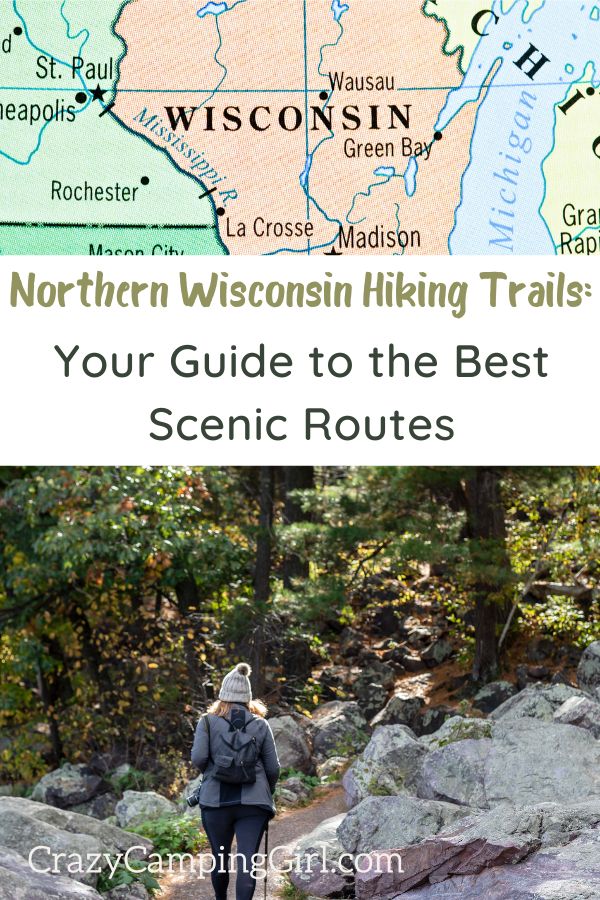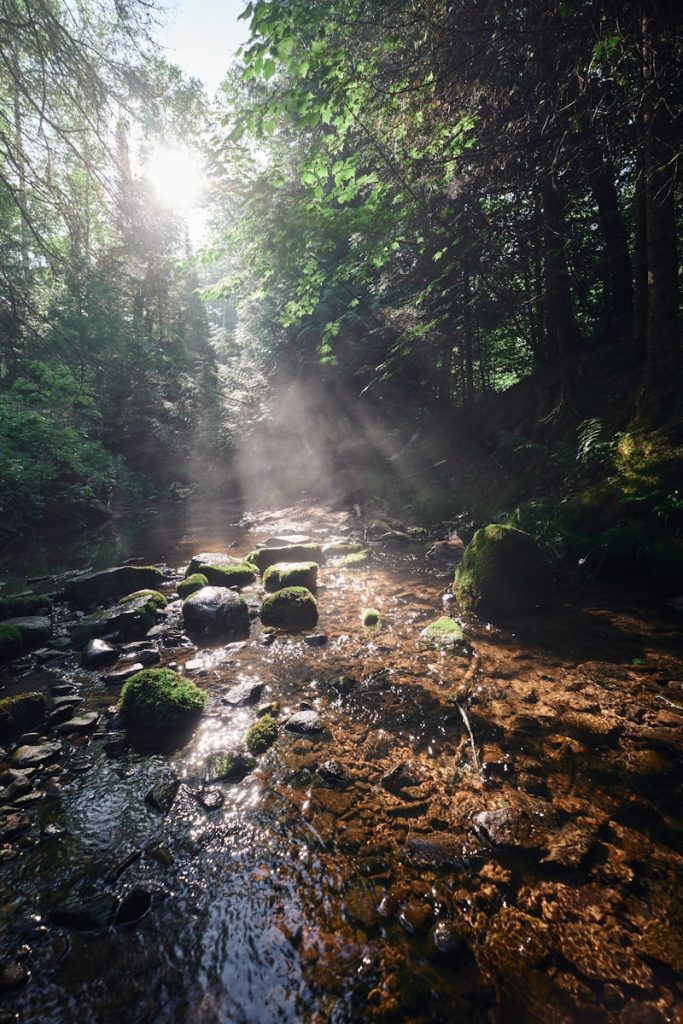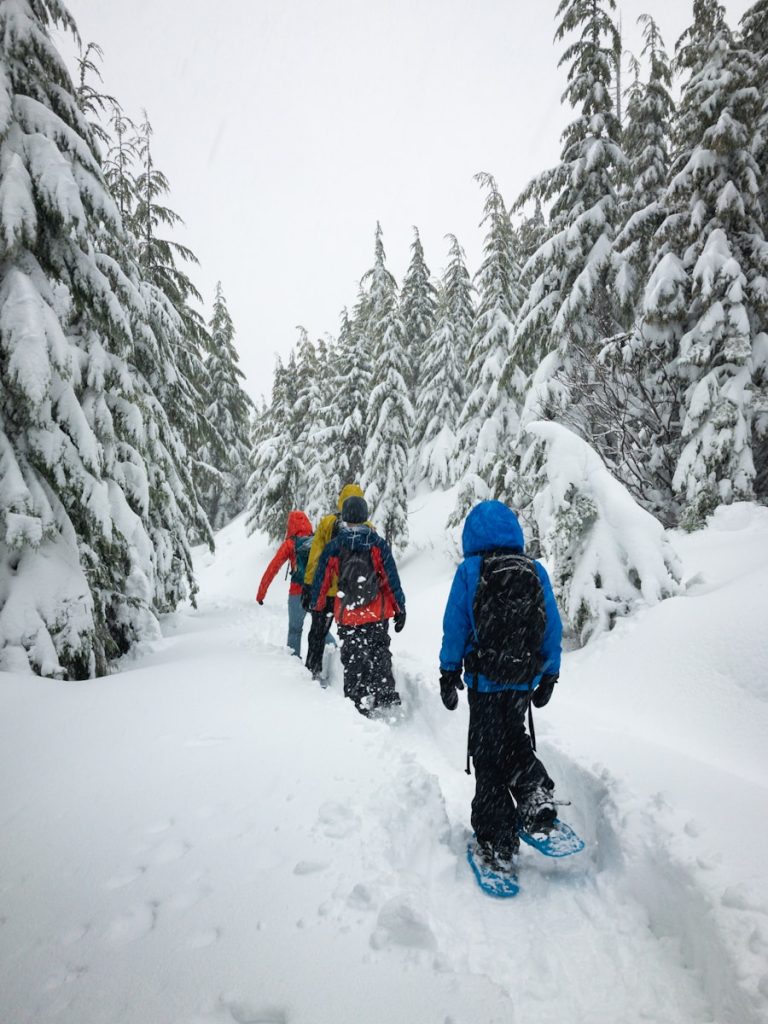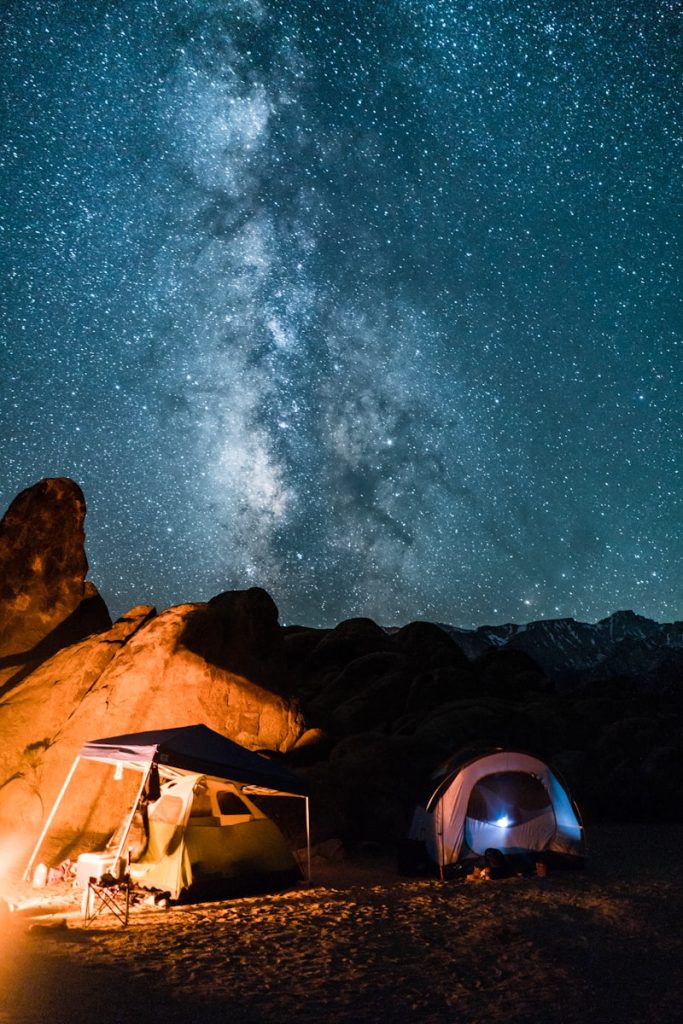
Northern Wisconsin Hiking Trails: Your Guide to the Best Scenic Routes
We may earn money or products from the companies mentioned in this post.
Northern Wisconsin offers a rich tapestry of natural beauty that beckons to outdoor enthusiasts with its diverse range of hiking trails. Whether you’re an experienced hiker seeking a challenging trek or someone who prefers more leisurely walks through picturesque landscapes, this region has a path that will satisfy your urge for adventure. Nestled among its dense forests, pristine lakes, and rolling hills, the Northern Wisconsin hiking trails provide not only exercise but a serene escape from the bustle of everyday life.

As you plan your next outdoor journey, consider the best trails for hiking in Northern Wisconsin, where each route presents its unique set of natural features. Marvel at the sight of majestic waterfalls, trek across scenic overlooks that render panoramic views, or immerse yourself in the quiet solitude of the Northwoods.
For a memorable experience, explore the variety of trails, each offering its distinct distance, terrain, and level of difficulty to accommodate your individual hiking abilities.
Ready to lace up your hiking boots? Embrace the call of the wild as you navigate through a landscape dotted with opportunities to encounter local wildlife and breathe in the fresh, crisp air. With every step, you’ll find that hiking in this part of Wisconsin isn’t just a physical activity, it’s a journey through the heart of nature’s grandeur.
Trail Selection in Northern Wisconsin
When planning your hiking trip in Northern Wisconsin, consider the trail’s difficulty, the scenery it offers, and how accessible it is from your location.
By Difficulty
- Easy: The Bayview Trail on Madeline Island provides a leisurely 3.4-mile hike that’s perfect for beginners or those looking for a relaxing walk.
- Moderate to Challenging: Explore parts of the North Country National Scenic Trail, which offers varied terrain and longer distances for more experienced hikers.
By Scenic Views
- Waterfront Views: Madeline Island’s Bayview Trail also boasts views of the sea caves on Devils Island, making it a dual win for both accessibility and scenery.
- Waterfalls and Forests: For a display of natural beauty, including waterfalls, consider the sections of the North Country Trail near Copper Falls for an immersive experience.
By Accessibility
- Direct Access: Trails with direct car access like those detailed on Northwoods Wisconsin allow you to start hiking without a lengthy approach.
- Remote Trails: For an off-the-beaten-path adventure, research trails listed on Northern Wisconsin Trails, which may require additional effort to reach but offer serene, untouched landscapes.
Popular Trails Overview
In Northern Wisconsin, you’re surrounded by a wealth of natural beauty and the hiking trails here offer you a direct connection to the serene wilderness. Each trail has its unique features whether you’re seeking scenic vistas, serene forests, or lakeshore walks.
Ice Age National Scenic Trail
The Ice Age Trail is one of only eleven National Scenic Trails in the United States. As you step onto the trail, you’ll be tracing the edges of the last continental glacier in Wisconsin. Its terrain varies greatly, with some segments that will challenge you and others that are perfect for a leisurely walk.
Chequamegon-Nicolet National Forest Trails
Within the expanse of the Chequamegon-Nicolet National Forest, you’ll find a dense network of trails. These trails skirt crystal-clear lakes and wind through old-growth forests. Whether you’re up for mountain biking or a tranquil hike, this forest offers trails like Bearskin Trail and the Anvil Lake Trail which are beloved by outdoor enthusiasts.
Apostle Islands National Lakeshore Trails

For stunning coastal views, the Apostle Islands National Lakeshore Trails present a unique hiking experience. Traverse cliff-top trails with panoramic views of Lake Superior and the Apostle Islands. The Lakeshore Trail brings you to sea caves, historic lighthouses, and sandy beaches, giving you a diverse coastal landscape to explore.
Essential Gear for Hiking
Preparation is vital for a safe and enjoyable hike in Northern Wisconsin. Ensuring you have the right equipment can enhance your experience and help you tackle the diverse terrain confidently.
Seasonal Gear Recommendations
Spring/Summer:
- Footwear: Lightweight, breathable hiking boots or shoes
- Clothing: Moisture-wicking layers, a sun hat, and sunglasses
- Protection: Sunscreen and insect repellent
Fall/Winter:
- Footwear: Insulated, waterproof boots
- Clothing: Thermal layers, gloves, and a beanie
- Protection: Windproof jacket and chapstick for cold protection
Safety and Navigation Equipment
- Navigation: A reliable compass and physical trail maps; alternatively, a GPS device if preferred
- Communication: A fully charged cell phone and a portable power bank
- Emergency: A whistle, a headlamp with extra batteries, and a basic first-aid kit
Remember, the right gear makes all the difference on the trails. Tailor your selection to the season and always prioritize safety essentials.
Wildlife and Natural Features
Northern Wisconsin offers a rich tapestry of ecosystems, providing habitats for diverse species and showcasing unique geological wonders.
Flora and Fauna Spotting
In Northern Wisconsin, you’ll encounter a variety of ecosystems, from dense forests to tranquil shorelines. Forests are home to towering white pines and sugar maples. Amidst the underbrush, you might spot white-tailed deer or hear the distinctive call of the pileated woodpecker. Lakes and rivers host a range of freshwater fish, while the shores might reveal the tracks of otters or even black bears.
Geological Formations
The Apostle Islands National Lakeshore is renowned for its sea caves, sculpted by the relentless force of Lake Superior. Away from the shore, the Penokee Mountain Range offers ancient rocky outcrops with sweeping vistas, as described by the North Country Trail Association. Trails meander through this prehistoric landscape, allowing you to explore the geological history that spans billions of years.
Weather Considerations for the Northern Wisconsin Hiking Trails
When planning your hiking trips in Northern Wisconsin, it’s essential to consider the seasonal weather variations and local weather patterns to ensure a safe and enjoyable experience.
Best Seasons for Hiking
Spring (March to May):
- Temperatures: Ranges from 30°F to 60°F. Expect cooler mornings and evenings.
- Trail Conditions: Wet with melting snow and rain; waterproof gear is recommended.
Summer (June to August):
- Temperatures: Ranges from 50°F to 80°F. Warmest months, with increased humidity.
- Trail Conditions: Dry and clear, but prepare for mosquitoes and ticks.
Fall (September to November):
- Temperatures: Ranges from 30°F to 70°F. Cooler with less humidity.
- Trail Conditions: Ideal for hiking with colorful foliage; wildlife is more active.
Winter (December to February):

- Temperatures: Can drop below 0°F, with averages around 10°F to 20°F.
- Trail Conditions: Snow-packed; snowshoes or skis may be necessary.
Understanding Local Weather Patterns
- Lake Superior has a significant impact on local weather, creating microclimates that can change rapidly.
- Precipitation: Northern Wisconsin experiences a moderate amount of rainfall. Check the forecast for rain or snow, which can affect trail conditions.
- Wind: Wind speeds can increase near the lake, affecting perceived temperature. Dress in layers to adjust to changing conditions.
- Sun Exposure: Even on cooler days, UV rays can be strong, especially near reflective surfaces like water or snow. Sun protection is advised.
Remember to check the local weather forecast before heading out on any trails to be prepared for current conditions.
Hiking Safety and Etiquette on the Northern Wisconsin Hiking Trails
When exploring the trails of Northern Wisconsin, prioritize your safety and the integrity of the natural environment. Following established safety guidelines and etiquette ensures a pleasant experience for all hikers.
Trail Safety Tips
- Plan Ahead: Check the weather and trail conditions before leaving. Inform someone about your itinerary and expected return time.
- Gear Up: Wear appropriate hiking boots and clothing suited to the terrain and weather conditions. Always carry a map and compass or a GPS device.
- Stay on Track: Hike on marked trails and avoid veering off to minimize the risk of getting lost and impacting untraveled ecosystems.
Leave No Trace Principles
- Dispose of Waste Properly: Pack out all trash and leftover food. Proper waste disposal keeps the trails clean and protects wildlife.
- Respect Wildlife: Observe wildlife from a distance and do not feed them to prevent unnatural behaviors and dependencies.
- Be Considerate of Other Visitors: Maintain a low noise level and yield to other trail users as outlined in the local trail etiquette guidelines. Remember, all users yield to horseback riders.
Trail Conservation Efforts
Preserving the quality and accessibility of trails in Northern Wisconsin is paramount for the enjoyment of future generations. Your involvement and awareness of ongoing efforts are crucial.
Volunteer Opportunities
Engage with Local Organizations: By joining groups like the North Country Trail Association, you can participate in events aimed at trail conservation. Your hands-on help is invaluable for tasks ranging from litter cleanup to educational outreach.
Attend Trail Work Days: Local conservation groups often host work days where you can help with trail repairs and enhancements. Keep an eye on Wisconsin’s DNR calendar for opportunities in areas such as the Northern Highland-American Legion State Forest.
Trail Maintenance Initiatives
Adopt-a-Trail Programs: These encourage local stewardship of trails, assigning sections of trails to individuals or groups for regular maintenance.
Regular Assessments: Professional crews and trained volunteers conduct seasonal trail assessments to identify and mitigate erosion issues, maintaining trails in prime condition.
Erosion Control Projects: By implementing measures like water bars and check dams, trail integrity is maintained, especially on heavily traveled or sensitive paths.
Camping and Lodging
Your adventure in Northern Wisconsin’s scenic wilderness isn’t complete without considering where to stay. Whether you’re looking for a campsite close to hiking trails or a comfortable lodge after a day’s hike, there are ample options to suit your needs.
Camping Near Trails
If you’re eager to immerse yourself in the great outdoors, you’ll find several camping trails that allow you to set up camp right amidst nature’s beauty. For a direct connection to the landscape, backpack camping offers a unique experience.

You can reserve a spot at one of Wisconsin’s state parks for a backpacking adventure along the Ice Age Trail as detailed on the Wisconsin DNR website. Keep in mind the Copper Falls Park, which not only provides seven miles of hiking but also camping grounds for a complete nature retreat.
Lodging Options for Hikers
After a rigorous day of hiking, comfort is key. In the region, you’ll find a mix of lodgings, from cozy cabins to hotels. The Hidden Lakes Trail details options like Franklin Lake Campground for those who prefer to stay close to the trails. Alternatively, for those seeking more amenities, there are various accommodations in nearby towns offering a warm bed and hot showers. Whether you choose to camp under the stars or relax in a lodge, you’re covered in Northern Wisconsin.
Local Communities and Resources
Exploring Northern Wisconsin’s trails offers more than just scenic beauty; local communities provide vibrant cultural experiences and essential resources for hikers.
Cultural Attractions
Your hiking adventure in Northern Wisconsin is enriched by the local culture. You could start at Solon Springs, a charming community known for its connection to the North Country Trail. Amid your hikes, take the opportunity to enjoy community events that showcase local arts and craftsmanship. This blend of outdoor recreation and cultural engagement creates a uniquely rewarding experience.
Hiking Supplies and Services
Securing the right gear is crucial for a successful hiking trip. In the local towns, you’ll find numerous outfitters and stores ready to equip you with everything from trail maps to camping gear. For instance, Madeline Island offers opportunities to rent kayaks for exploring the sea caves at Devils Island.
For those hiking the extensive trail networks, such as the Northern Highland-American Legion State Forest, there are designated areas where you can access hiking supplies and services tailored to your needs.
Frequently Asked Questions about Northern Wisconsin Hiking Trails
In this section, you’ll find concise answers to common questions about hiking adventures in Northern Wisconsin. Let’s explore the trails that beckon with natural beauty and interesting terrain.
What are the top-rated hiking trails in Northern Wisconsin?
The Bayview Trail on Madeline Island is noted for its easy-going path and scenic views. Similarly, trails within the Chequamegon-Nicolet National Forest are preferred by hikers for their diverse and stunning landscapes.
How long is the Ice Age Trail in Wisconsin?
The Ice Age Trail spans approximately 1,200 miles and traverses the state of Wisconsin, showcasing a variety of glacial features and ecosystems unique to the region.
What are the entry points for the North Country Trail in Wisconsin?
You can access the North Country Trail at various points, with notable entry spots including the Chequamegon-Nicolet National Forest and Copper Falls State Park, which grant passage to over 200 miles of the trail in Wisconsin.
How challenging are the trails at Copper Falls State Park?
Copper Falls State Park offers a range of trails that vary in difficulty, but most are considered moderate, presenting opportunities for both day hikes and more engaging treks amidst waterfalls and gorges.
Which trail is considered the most difficult hike in the Midwest?
The Porcupine Mountains in Michigan offer some of the most challenging trails in the Midwest, but within Wisconsin, the Ice Age Trail provides several rigorous sections for experienced hikers seeking a tough challenge.
What is the highest point accessible by hiking in Wisconsin?
The highest point in Wisconsin that you can reach by hiking is Timms Hill, which stands at an elevation of 1,951 feet above sea level, offering panoramic views of the state’s natural landscape.
